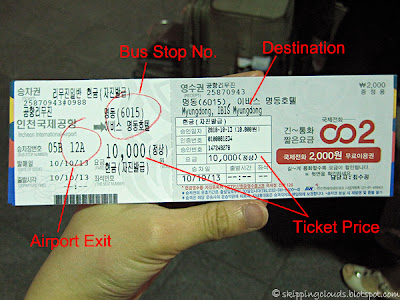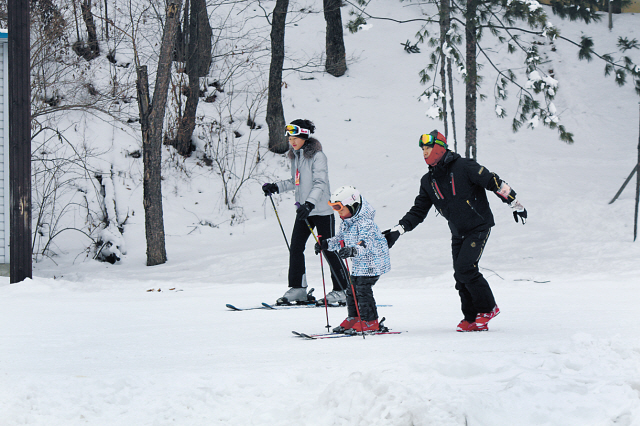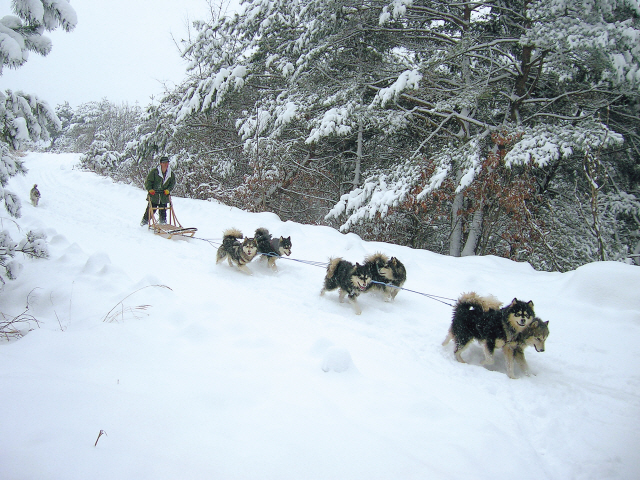[QUOTE=Chan-Ho;83735]The South Koreans are said to be some of the hardest working people on the planet. That may be why they play so hard, too. They are currently riding a wave of hedonistic popular culture – locally called hallyu – which has catapulted their home-grown movies, soap operas and fashion into the spotlight. Not to mention their pop music, here called K-pop, and the singing/dancing sensation Psy, whose dance track Gangnam Style last weekend became YouTube’s most-watched video of all time, with more than 800 million views.
Across the capital there are all the signs of a self-assured trendsetting city, seen through its pop-up stores and underground live gigs and a vibrant independent café culture and low-key bookshops. South Korea has become the number one byword for cool among Asia’s youth, and its capital, Seoul, is one of the world’s most wired cities. So even if the Seoul vibe is not discernible on the street where you live, you can locate the buzz instantly on your Samsung phone or LG tablet.
[IMG]  [/IMG]
[/IMG]
The Dongdaemun all-night market
For first-time tourists, it is not easily apparent how to tackle such a massive, crowded and densely populated city – as is the case with many modern Asian metropolises. There are few obvious must-sees (Gyeongbokgung Palace, the National Museum, Gwan gjiang Market). Beyond visiting those sites, the best way to get to grips with the city is to join the 24-hour Seoul lifestyle. That might include visiting Dongdaemun all-night market or browsing among the hundreds of cosmetic shops in Myeongdong; it might also include a midnight session of indoor “screen golf”, belting out some K-pop karaoke, here called noraebang, or, of course, re-enacting the Gangnam Style dance. Here are a few pointers:
The old
The Joseon dynasty ruled a united Korea from the late 14th century until 1910 with an ideology based on Confucian principles. In the earliest days the country’s leaders resided at Gyeongbokgung, the oldest and largest palace in Seoul consisting of a series of regal buildings, stone gates and elegant courtyards. There is a regular changing of the guard ceremony here involving soldiers dressed in flowing robes and rather comical false beards.
South of Gyeongbokgung is the area of Insadong, the main thoroughfare of which is lined with handicraft shops, traditional tea-houses and art galleries. In the Ssamziegil complex you can find shops selling local artisans’ works, including celadon vases, calligraphy, embroidery and handmade paper lanterns. Narrow alleyways are lined with stalls touting rice cakes, traditional candy and quince tea. At the southern end of the street is Tapgol Park, where locals practise martial arts and play the traditional board game of omok.
[IMG]  [/IMG]
[/IMG]
Gyeongbokgung, the oldest and largest palace in Seoul
For some of Asia’s best street food head to Gwangjang Market, which offers an inexpensive and hugely atmospheric dining experience. Try bibimbap (meat, vegetables and egg served on rice) and sizzling nokdu bindaetteok (mung bean pancakes). Almost every meal comes with kimchi, a spicy fermented dish of vegetables which may be cabbage, lettuce or radish, and is drenched in red pepper paste. Korean cuisine is one of the most underrated in Asia – but the food here is reason alone to visit the country.
The new
At first glimpse Seoul does not wow visitors in the same way as Hong Kong or Shanghai. Nor does it capture the imagination of historians as do Hanoi or Rangoon. Rebuilt swiftly and cheaply after the Korean War of 1950-53, many of the capital’s buildings are rather utilitarian. But more recently there have been some impressive architectural projects and in 2010 Seoul was crowned the World Design Capital.
The upmarket district of Gangnam is studded with examples of striking urban developments, such as the Dongdaemun Design Plaza, complete with park, museum and art gallery, which is the handiwork of the British architect Zaha Hadid. In the multicultural district of Itaewon, redeveloped by the American arch itect Daniel Libeskind, the Leeum Art Museum contains a spectacular collection of modern and contemporary works.
[IMG]  [/IMG]
[/IMG]
The upmarket district of Gangnam
In Digital Media City, the Digital Pavilion showcases cutting-edge technology, allowing visitors to engage with the latest groundbreaking products. Samsung D’light is a digital showroom that chronicles the history of the electronics giant as well as displaying prototypes touted as the next big thing.
Yet the future is not all hi-tech. Following decades of rampant economic growth at the expense of the environment, Seoul city officials have been trying give the city a makeover and to raise the quality of life. One shining example has been the restoration of the ancient waterway Cheonggyecheon in the heart of the downtown area. Until recently the channel was buried beneath a multi-lane motorway. Now it is an oasis comprising a crystal-clear stream, waterfalls and tree-lined walkways along the banks.
The scary
All visitors should have the DMZ or Demilitarized Zone between North and South Korea on their itinerary. It is a fascinating, sobering day-trip up to the DMZ, only an hour’s drivenorth of Seoul – or within missile-striking distance, as tourists here are repeatedly reminded. For more than 50 years, troops from both sides have glared at each other across the three-mile-wide buffer zone which splits the peninsula from the east coast to the west coast. Established at the end of the Korean War, it is one of the world’s most heavily fortified borders; there are thousands of troops stationed here with intermittent watchtowers and signs warning of landmines.
Tourists can also visit the Joint Security Area at Pan munjeom, the village which straddles the frontier and where cross-border negotiations take place. They can walk the length of the “Third Tunnel of Aggression”, which South Korea discovered in 1974 and say was dug by the North in order to enable a surprise attack. The North Korean authorities say it was only a coal mine.
In spite of the gravity of the situation – North and South Korea are still technically at war – I was conscious of a strong sense of resilience among South Koreans which sometimes translated into black humour. “Did you bring your anti-landmine shoes?” the local guide, Richard, asked as I stepped off the tour bus. “No defecting to the North,” he added.
Looking towards the border I was told how to distinguish between the two sides. “The hills covered with trees are in South Korea,” a local explained. “We carried out a tree replanting scheme after the war but in the north the hills are bare. They chop them down for firewood or even to eat the bark.”
Back in the bus, Richard tried to lighten the mood. “All men must do around two years of national military service here,” he said. “That is their duty. South Korean women’s duty is to say goodbye to their boyfriend and find a nice new one who has already finished his service.”
Back in the city there is more information about the Korean War and its continuing repercussions at the War Memorial & Museum in Itaewon. It is remarkable to compare the crippling poverty depicted in the exhibitions to the prosperity South Korea now enjoys outside the museum’s doors.
Whether you are reflecting on history or getting a glimpse into the future, Seoul delivers.
Going Gangnam style
There is nowhere in Asia right now that is hotter than Gangnam, the gleaming district of Seoul which translates to “south of the Hangang river” and the neighbourhood which forms the backdrop to the dance track (and YouTube sensation) Gangnam Style. (The South Korean singer Psy – “whoop, whoop!” – has a lot to answer for as millions of people on the planet ride an imaginary horse in imitation of his quirky dance moves.)
What is Gangnam style? According to Psy himself it is about “dressing classy and dancing cheesy”.
“Actually, Psy is not really Gangnam style,” says Woo Eun Young at Seoul’s K-pop dance school Def Company. “He is a chubby 34 year-old doing a funny dance. But we love him. He may be satirising Gangnam society, but he is also showing the world who we are.”
[IMG]  [/IMG]
[/IMG]
South Korean singer Psy
The area of Gangnam symbolises wealth, luxury and excess, with high-priced housing, upmarket shops and stylish restaurants. It is also full of plastic surgery clinics, 24-hour spas and karaoke bars. The waif-like bright young things of Seoul hang out on the pavement around the Gangnam metro station wearing skinny jeans, sporting shaggy hairstyles and heavy make-up and gazing at each other through big plastic spectacles – without lenses.
Def Company offers open-house K-pop dance classes, which, says Woo Eun Young, are surging in popularity. “We have had hundreds of foreigners, including Britons, Brazilians and Japanese, signing up for classes. They are not all dreaming about becoming K-pop stars. It can be just for fun.”
For shoppers seeking the Gangnam look, the classiest shops are around Apgujeong. They include 10 Corso Como Seoul (sister to the original in Milan), Daily Projects (for cutting-edge local designers) and Galleria, a luxury department store. Take a break at the trendy Gorilla in the Kitchen and indulge in some celebrity spotting (you may catch sight of the restaurant’s owner and screen actor, Bae Yong-joon). Neo-Korean cuisine in a fine-dining setting can be found at Jung Sikdang, which also has a New York branch.
For a thorough K-pop experience, Everysing, run by the largest K-pop entertainment company in the country, has karaoke rooms, photo booths in which you can be snapped with the stars, and lots of K-pop paraphernalia. At Star Avenue Lotte World, visitors can re-enact scenes from television soaps, write a fan e-letter to an idol and be quizzed on pop culture. They can also test their horoscope compatibility with a celebrity of choice. Mine stated that the “roles are clear”: “the man leads while the woman supports unconsciously. The two may look conservative and boring but the two are happy”. I sensed, alas, I may not be destined for a life with a K-pop star.
Seoul essentials
Getting there
British Airways (0844 493 0787, ba.com) runs six times a week from Heathrow to Seoul (flight time 11 to 12 hours), with return fares in World Traveller class starting at £650; World Traveller Plus from £999, Club World from £2,596 and First Class from £5,772.
Michelle Jana Chan travelled with Cox & Kings (0845 154 8941, coxandkings.co.uk), which offers an eight-night independent tour of South Korea from £2,595, including direct flights with BA, accommodation with daily breakfast and lunch, private transfers and excursions. It also offers a four-night trip based at the Conrad Seoul hotel, including British Airways flights, airport transfers and a full-day private city tour, from £1,795.
When to go
With extremely cold winters and sticky summers, Seoul is best visited in spring and autumn, although these are also the busiest tourist seasons. The dates of most festivals are dependent on the lunar calendar, with New Year falling in January/February. In April, the cherry trees are in blossom for about 10 days and are best seen in Yeouido Park. The Lotus Lantern Festival in May celebrates Buddha’s birthday; temples are decorated and there is a lantern parade. In September the country marks Chuseok or thanksgiving with games and feasting.
[url] http://www.telegraph.co.uk/travel/destinations/asia/southkorea/9718322/Seoul-a-24-hour-city-running-on-K-pop-and-kimchi.html [/url]
 [/img]
[/img] [/img]
[/img] [/img]
[/img] [/img]
[/img]










